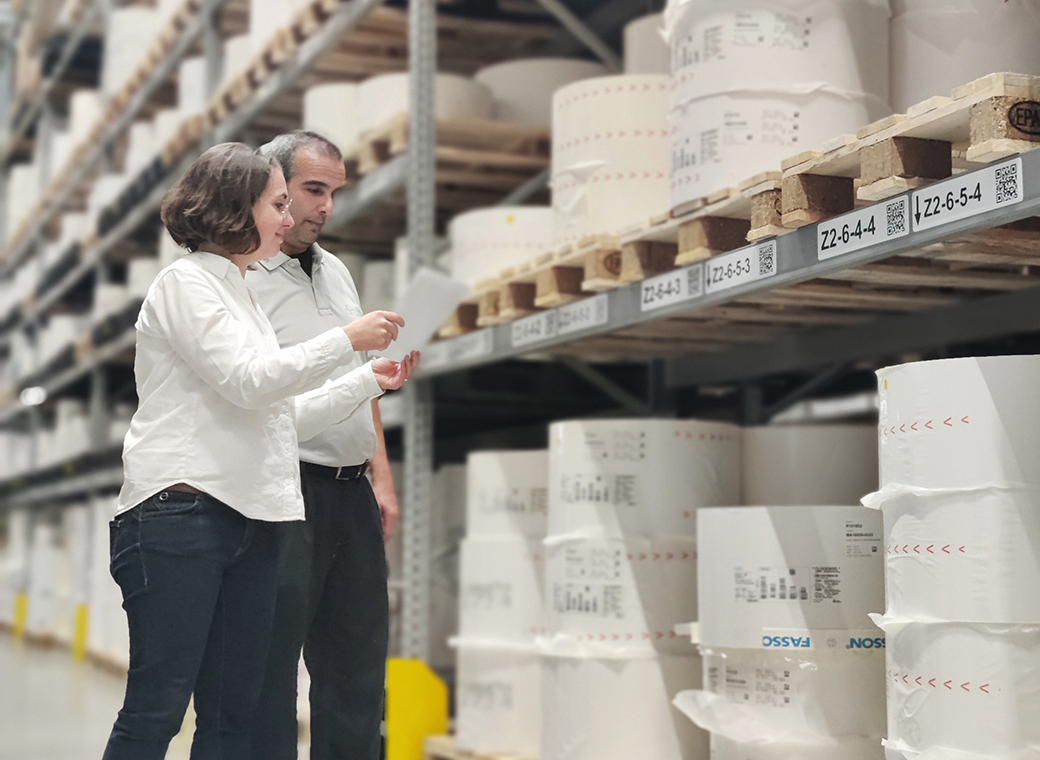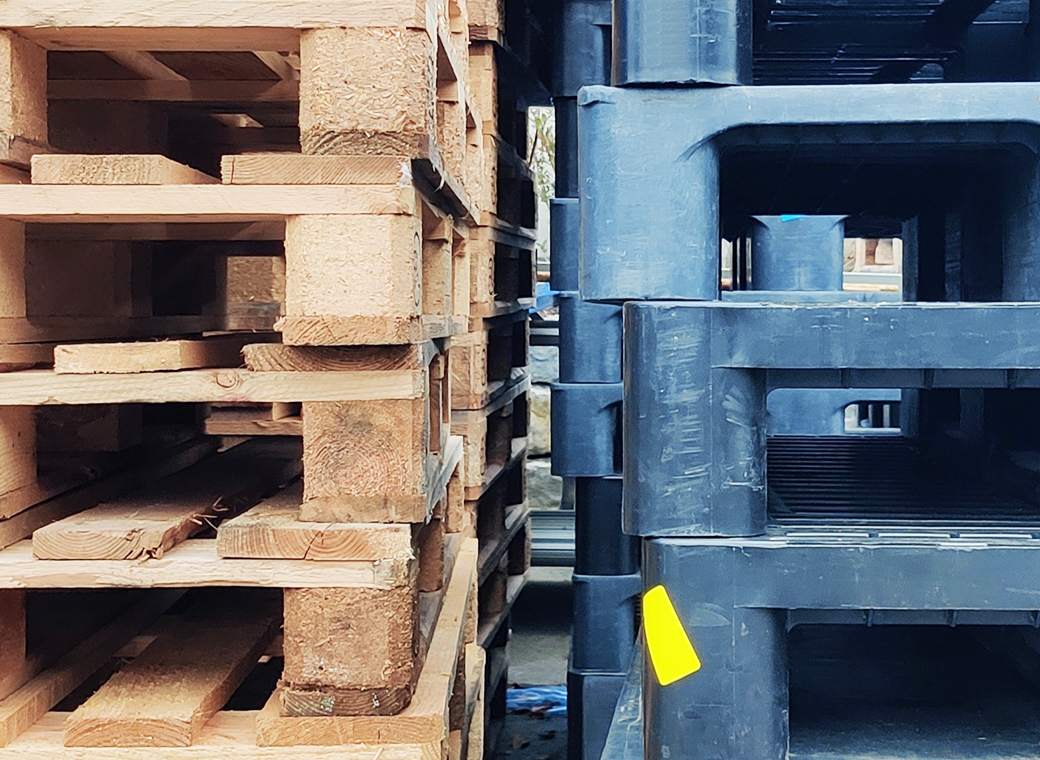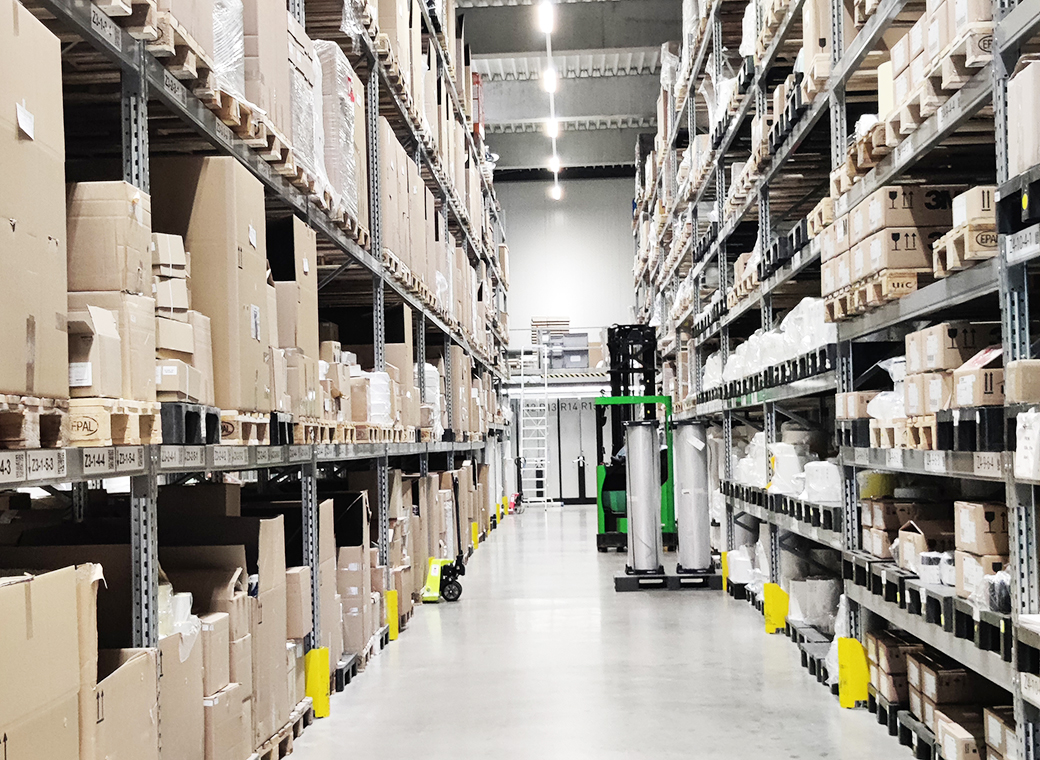Pallets play a huge role in supply chain management. Not only by transport but also stacking, storing, or protecting materials, it is impossible to do without them.
Robos-labels is since many years, a member of the pallet-exchange-system with its suppliers. That is, it is a cycle, the distributors send the goods on the pallets, and we return them after a particular time. One of our biggest suppliers suggested recently that changing paths and trying out alternatives for storage and transport may function better for us and our profitability. Because of this system, we are mostly dependent on our suppliers and must consider what they use in their usual business process. But after much thought we revised our decision and signed a new contract a few months ago in respect to the mode of goods storage. We will first be on a trial basis and change only a part of the warehouse. After successful implementation, our Warehouse will get a makeover with inclination towards effectiveness and efficiency.



The global pallets market reached 6,307.0 million units in 2020 and is projected to reach 8,303.5 million units by 2030, registering a CAGR (Compound annual growth rate) of 4.6% from 2021 to 2030. With such an engraving impact, the firms must rethink their way of working and consider other alternatives than the traditional ones to optimise the functionality of supply-chain process. The first patent of such pallets emerged to be in the 1960s. Since then, the growth has been skyrocketing. The pallets are available in many diversified sizes and materials, which has raised interests of many purchasing officers from many industries.
Both materials, plastic and wood, come with its own pros and cons. It depends on which industry and with what kind of products the firm deals with, for this decision to take place. It is also a good strategy to retain customers as the pallets that must be returned and not disposed of after use which extends a relationship and leads to recurring sales.
Plastic pallets – background – then and now
The plastic pallets gained popularity in the middle 1900s after the second World War. In the earlier phase, they were mostly manufactured by blow moulding and injection moulding methods. Other methods began to emerge later including compression moulding, structural foam moulding, rotational moulding, and thermoforming.
In comparison to its wooden counterpart, they are now more reliable, sturdy, and robust. Its durability makes it stand apart in many industries and has led to a gradual shift to its benefit.
Advantages of using plastic pallets
There are many benefits of the practice of using plastic pallets. The following are a few that are most relevant and may raise eyebrows of some wood pallet users:
- Lifespan of a plastic pallet is longer and trips per pallet are calculated to be much higher than its alternatives.
- Cost effective and easier to transport.
- Choosing plastic pallets over wood pallets eliminates nails, splinters, and broken boards. This means that your valuable goods are less likely to be damaged and your employees have a safer working environment.
- They are clean, dust-free, and washable (water resistant).
- Pallet availability and supply is ensured.
Disadvantages of a wooden pallet
Although it is inevitable to eradicate wooden pallets completely from the supply-chain. But in comparison to its alternative some of the following negative points may convince its users to rethink.
- Risk of contaminating the product.
- Wood pallets need to be replaced much more often than pallets made of alternate materials.
- The wood splinters, hardware, and debris also get into automated machinery and cause jams, which may result in equipment damage and backlogs.
- They are not hygienic, absorb moisture and rot.
- Chance of breakage is high, they harbour fumigation, and infestation.
Conclusion – In comparison:
The wooden pallets are no longer the best option for businesses with a future oriented perspective. Plastic pallets can be recycled and returned. They are a cost-effective and environmentally friendly, an alternative for supply chain. It is not only less likely to break down on repeated trips but also have a huge capacity of load holding.
Some countries also have import restrictions on the shape, size, and material of the pallets. Wood can be one of the controversial materials when shipping the goods abroad.
In both the cases, firms are mostly participants or members of a pooling system, where its cost neutral for them and the pallets are changed at regular intervals of time.
Plastic is the fastest growing and most commonly sold alternative. It wouldn’t need to be replaced so often and can be cleaned and reused. The pros of the plastic pallets overweigh the cons and in comparison, its beneficial in the wood-deprived present and future.
Supply Chain and its components are dynamic and everchanging. Firms that change with it, grow with it!
WHAT EXPERTS HAD TO SAY:
How is the experience with both the pallets?
Theodoros Stefanidis, External Logistics: I was first hesitant to change but considering the life span of a wooden pallet, and the load capacity, it is important that a company turns its back to it and focuses more on sustainable and clean alternatives. It is better to invest once (time, energy, or money) instead of constantly spending for the upkeep and repair of the pallets. Plastic pallets are said to be low maintenance, and for the near future, I am open to change for a better working.
How relevant is choice of pallets in regard to the Label-Industry?
Carina Hammel, Head of Production: For the labels it is very important to be clean and precise, with the apt amount of glue, colour, and the lamination. Accounting the dirt produced by wooden pallets, and the TCOB incurred to rectify the then aroused consequences, it is preferable to give plastic pallets a try. It is revolutionary, how minute constant changes can result in long term problem solving. Many products and customers demand sanitation standards to be met and clean working conditions. Although it’s not so strict with us in the labeling industry but it’s better to cater the dynamic environment and comply with the changes to be profitable in the long run.
Are there any challenges in process of purchase?
Viktoria Hüging, Head of Supply-Chain Management: The challenge balances itself in both the cases. Plastic is afterall not so bad as it is portrayed to be. In some cases, like these, using a renewable resource is more damaging to the environment and adds in huge proportion to the costs. For us as a customer, there are no purchasing costs incurred as we are participant of the pallet-exchange-program by the pallet distributors. We hope that we are able to successfully and effectively implement the changes and overcome the problems with a more efficient Supply-Chain.